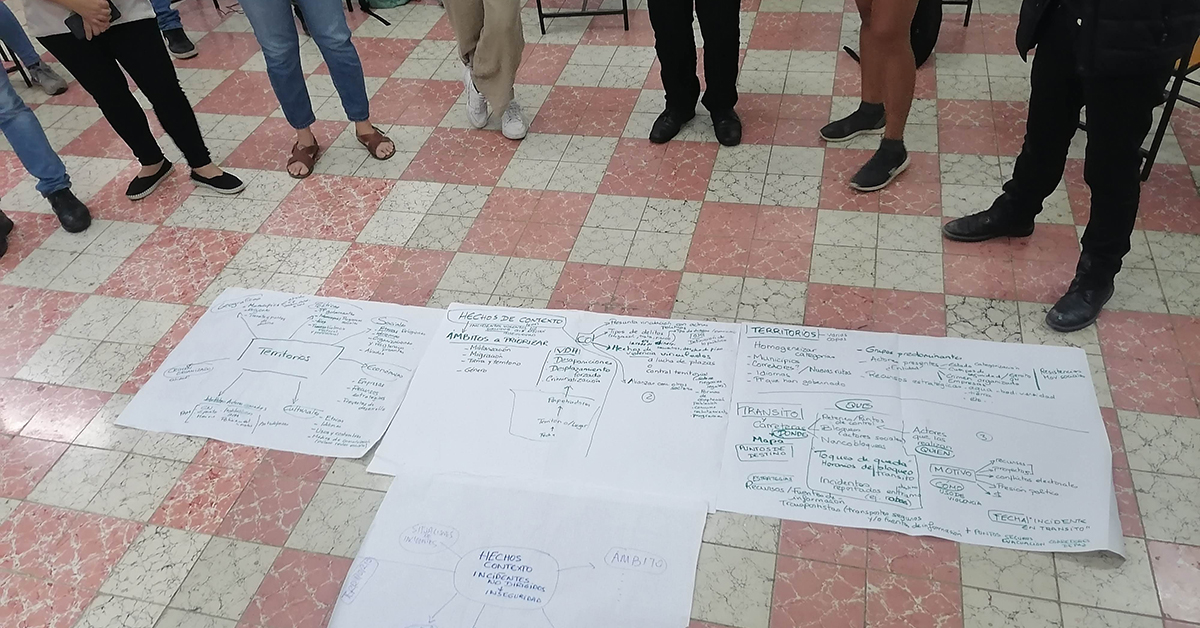Lee este artículo en Español aquí.
In a state where violence has reached alarming levels, organisations, human rights, land, and peace defenders have come together to create The Observatory of Human Rights Defenders in Chiapas. Referred to as El Obse, this public database is both a tool and a testament to the resilience of local defenders in Chiapas, offering a space to not only document the violence and the attacks they face but also a shared platform for building security and protection.
Chiapas, Mexico’s southernmost state, has long been a region defined by poverty, social inequality, conflict, and militarisation. Historically, tensions have centred around Indigenous resistance movements, repressive security forces, and U.S. influence. Chiapas has always been a key territory for organised crime, but in recent years, conflict and violence have risen due to disputed routes.
“There is a level of violence that creates a rupture in our communities, in our societies, from a perspective of social justice and collectivity.
“This observatory seeks to raise awareness of the aggressions, highlight the risks involved in exercising human rights, emphasise those acts of political violence directly targeting defenders, and, most importantly, contribute to the construction of the historical memory of the human rights victims in Chiapas.“
—Aldo Ledón, Director of Voces Mesoamericanas – Acción con Pueblos Migrantes, during the launch of El Obse.
Officially launched on 7 March 2025, El Obse brings together more than 20 civil society organisations and networks from the region:
- CDH Digna Ochoa
- CDH Fray Bartolomé de las Casas
- CDH Fray Ignacio de Barnoya
- CDH Fray Matías
- Centro Solidario Tsomanotik
- CoLibres – Movilidades Libre y Elegidas
- Enlace Comunicación y Capacitación
- IMDEC – Instituto Mexicano para el Desarrollo Comunitario
- SERAPAZ – Servicios y Asesoría para la Paz
- SiPaz – Servicio Internacional para la Paz
- SurSiendo
- SweFor
- Tzome Ixuk – Mujeres Organizadas
- Voces Mesoamericanas – Acción con Pueblos Migrantes
- Espacio de Seguridad SCLC (network of 10 organisations)
- Grupo de Trabajo Región Frontera Chiapas (network of five organisations)
Overview of El Obse
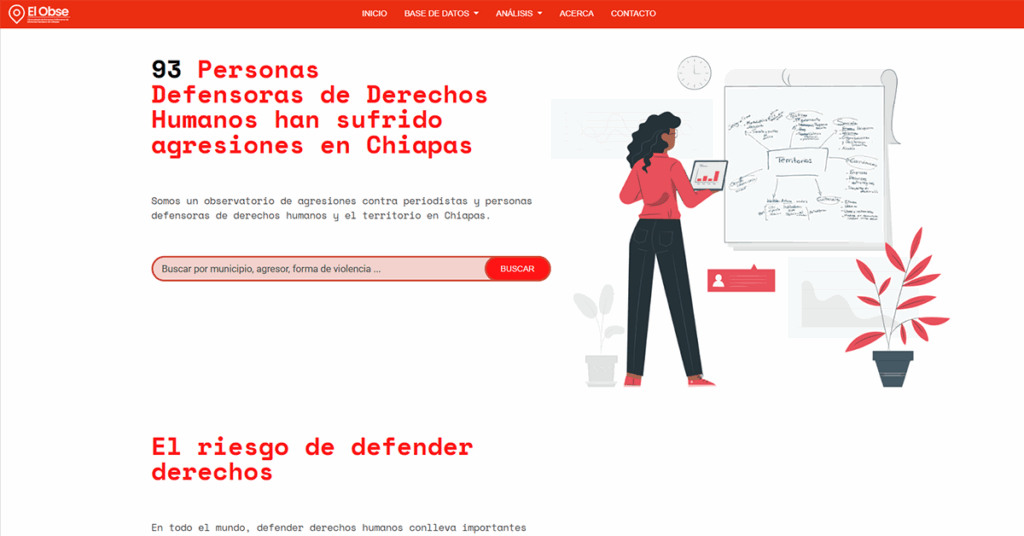
Now live and public, the platform offers a view of the documented cases, which date back to early 2024. So far, a total of 93 human rights defenders have been attacked in the state. The data can be filtered based on various factors, such as gender, role (activists, journalists, community leaders, students, religious figures, human rights observers, and community communicators), as well as the municipality, form of aggression, and the identified aggressor.
The platform also includes dynamic counters that track specific profiles, such as the gender of victims and the different types of rights being defended. To date, the data show 59 women, 33 men, and one non-binary individual among the human rights defenders attacked. It also captures data on 26 aggressors and includes information on various collectives involved in the incidents.
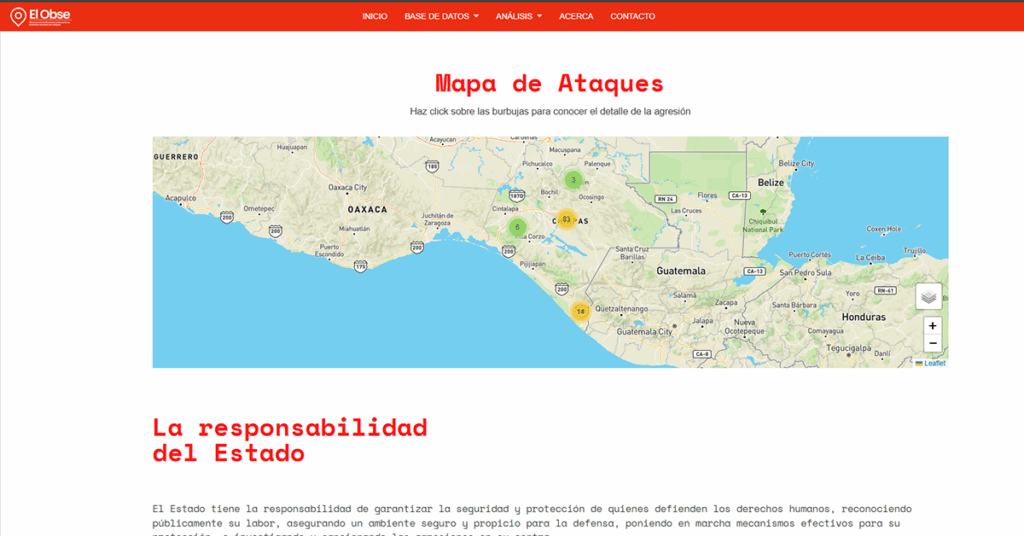
In addition to the data, the coalition publishes periodic reports, which provide analysis on the trends observed and highlight concerns for the future based on the information collected.
The escalating violence in Chiapas
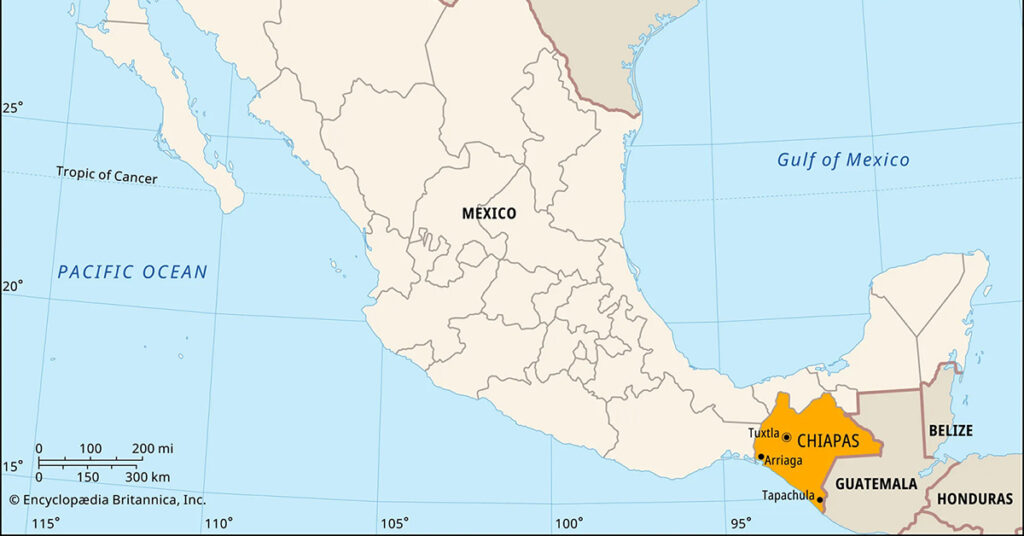
Today in Chiapas, powerful cartels fight for control of drug, weapons, and human trafficking routes, often operating in collusion with authorities, the federal military, and local police, who very often engage in these illegal activities with total impunity. While criminal organisations have had a presence in the region for years, since 2021, territorial disputes between Mexico’s two most dominant cartels have escalated, bringing a new wave of violence and instability to the state.
“We are witnessing extremely high levels of violence and the forced displacement of Indigenous communities here in Chiapas. That’s why we believe this observatory comes at the right moment.
“There is a serious situation of violence against human rights defenders. We know that Chiapas has historically been a place of massacres—let’s not forget what happened in Acteal. Many defenders have been criminalised and even murdered. Let’s remember the assassination of Simón Pedro, an Indigenous rights defender, who was killed in 2021.”
—Ximena Ramos, Coordinator of the Vulnerable Groups Unit, Office of the United Nations High Commissioner for Human Rights.
In the last seven years, 17 human rights defenders have been killed, which is considered the most extreme and final act of violence. This is in addition to other crimes, including intimidation, physical and verbal violence, slander, extortion, death threats, and more, many of which remain unreported due to fear and intimidation.
Among those targeted was Father Marcelo Perez. Recognised for his decades of work with Indigenous communities, a conflict mediator and human rights defender, he became a symbol of resistance in the region. As an uncomfortable presence for organised crime and groups of power, he was shot by a hitman after holding a mass in October 2024.
“The assassination of Father Marcelo Perez intends to immobilise the population, generate terror in the communities, but in the end, they also emerge as seeds within the community, generating stronger justifications to continue defending life,” said Victor Hugo Lopez, from Red Nacional de Organismos Civiles de Derechos Humanos (Red TDTTT).
The process of creating El Obse
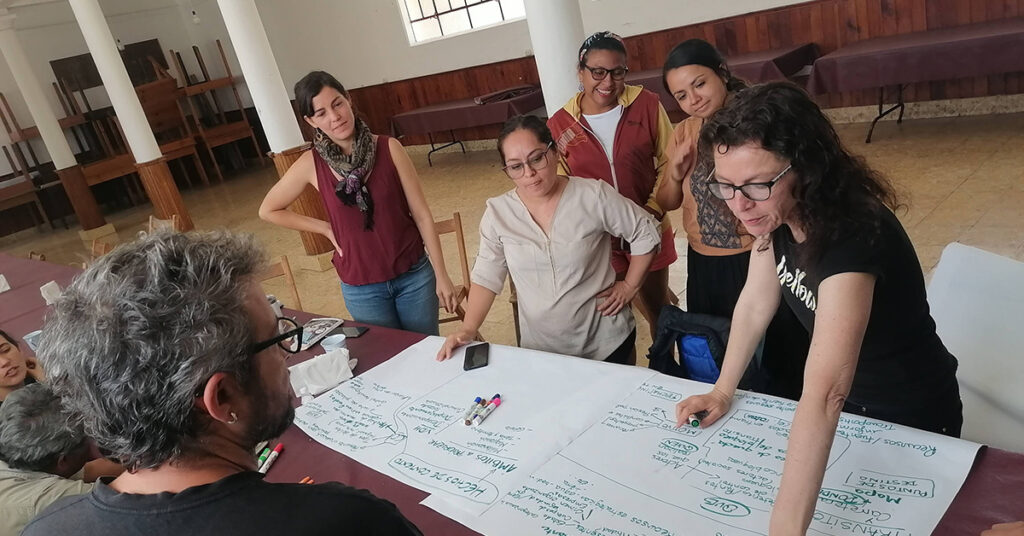
El Obse was an idea that started as a response to a shared need among human rights defenders for a space to document, analyse, and reflect on the alarming realities they all confronted in their work. From the start in 2023, the organisations involved were deeply committed to the project, investing countless hours and effort to move it forward. The process was shaped by the priorities and experiences of the defenders themselves, with HURIDOCS joining early on to provide support and help guide the work.
This first phase focused on trust-building and information sharing about the project, and included the set-up of a bespoke Uwazi instance for each organisation. This included a needs assessment, training for the defenders on Uwazi, and data migration.
“As we worked with organisations and collectives who had very demanding day-to-day documentation needs, we also had to navigate a technological gap. The challenge was introducing a new data model and Uwazi into their workflows. We worked closely together to adapt and ensure that the solution was practical and met their needs,” says Salva Lacruz, HURIDOCS’ Programme Manager.
Thereafter, the next steps focused on securing funding and support to consolidate the individual Uwazi instances into a state-wide Observatory.
“In 2024, the focus shifted to making this work visible, to create a public space that could be useful for journalists and other human rights stakeholders, through a digital tool. It was a step towards offering rigorous information and contributing our perspective from the south to say: this is what is happening in Chiapas,” says Aldo.
Given that this was the first time a coalition like this had formed in Chiapas, this phase needed to remain rooted in trust and participatory processes. For HURIDOCS, this stage involved maintaining support for all the individual instances while also facilitating the participatory process of designing the public instance of El Obse.
“The process of designing El Obse was participatory and collaborative, incorporating the perspectives of all the organisations involved. Methodologically, this meant organising several in-person meetings to analyse the needs and design a solution regarding both the documentation model and the platform for the Observatory,” says Salva.
What’s next
The development of El Obse showcases the critical role of collaboration and collective action in addressing the unique challenges faced by human rights and land defenders in Chiapas. Through ongoing partnership and capacity building on documentation practices, the project will continue to evolve to meet the specific needs of those on the ground.
In the medium term, the coalition behind El Obse aims to involve more organisations across Chiapas to broaden the diversity of voices, territories, and issues represented within the Observatory. Looking further ahead, the vision for El Obse is to potentially expand beyond Chiapas to encompass the wider Mexican southeast region, including states like Tabasco, the Yucatán Peninsula, Oaxaca, and southern Veracruz, or even extend nationwide.
The role of HURIDOCS
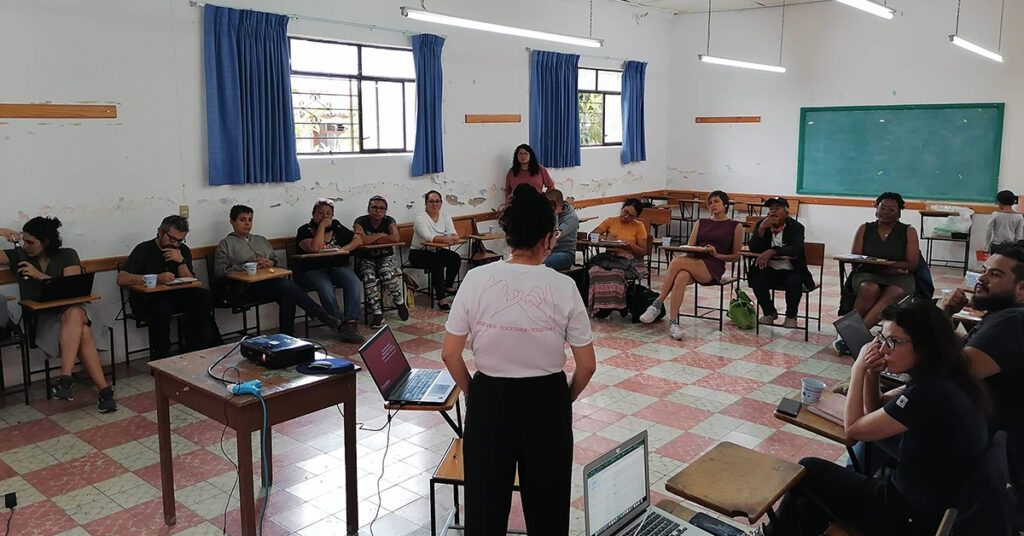
HURIDOCS has been part of El Obse from the beginning, working closely with the network of organisations to support the development and launch of the platform. Throughout the process, HURIDOCS helped review and adapt the documentation model, import existing data, integrate tools like the Tella app, and design key features such as visualisations, a timeline view, the website, and dynamic data dashboards.
“When building the Chiapas Observatory, HURIDOCS took the time to show us and modify the technology in order to respond to the reality of the organisations and human rights defenders in the state. It has been a lot of one-on-one work with HURIDOCS, and we have all really appreciated it. It has helped us make this project our own over the past two years, responding to the needs and realities on the ground rather than just offering the infrastructure. This has been very helpful because it allows the project to flourish and ensures its continuity.”
—Karla Jiménez Montoya, CoLibres – Movilidades Libres y Elegidas
In addition to technical support, HURIDOCS played a crucial role in the fundraising efforts needed to sustain the project, working alongside the coalition to secure the necessary financial support for its continued growth.
“The value of this project lies in its group-up development. Even though all of the civil society partners work on different human rights there was a community need to share information across organisations throughout Chiapas to help document the every changing security situation and provide more real-time security information, trends in threat movement and strategies, and use it all to advocate for a safer environment to do human rights work. We could not be more proud of this work at HURIDOCS and, given the increasingly volatile state of our global civil society community, we are committed to working on these kinds of solidarity-based projects.”
—Danna Ingleton, HURIDOCS Executive Director
Beyond the technical side, HURIDOCS’ role was also about fostering a shared learning process, learning from the local expertise of the partners in the region, building trust, and offering ongoing guidance.
HURIDOCS is proud to support this unique network. We believe that growing and sustaining the diverse perspectives and experiences of the larger Chiapas civil society will ensure the success of the project to build a healthy, secure, and supported population that can safeguard itself against hostile actors.
This project was made possible thanks to the support of Ville de Genève.
